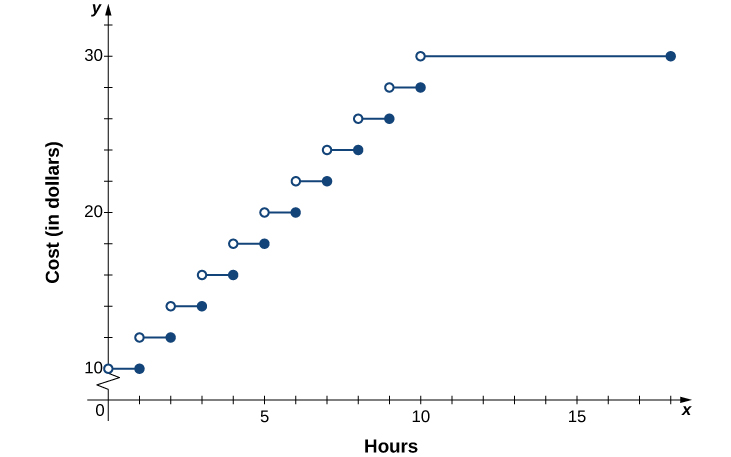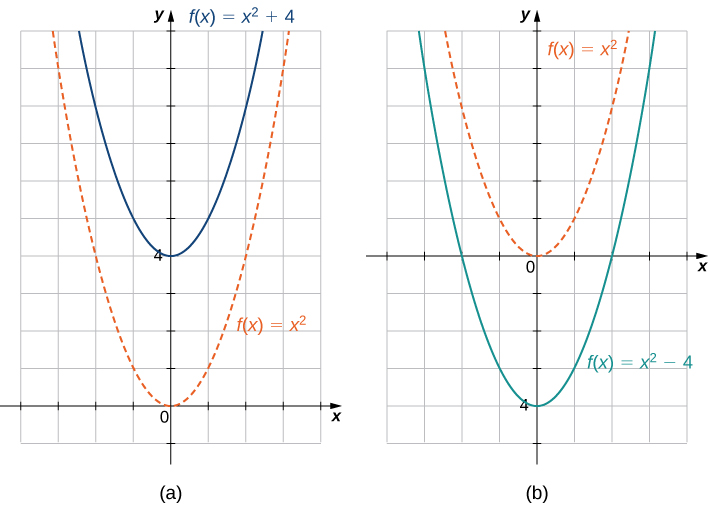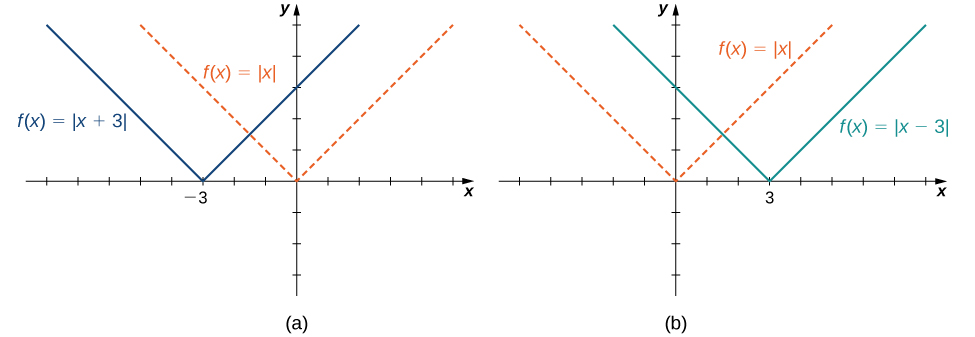| << Chapter < Page | Chapter >> Page > |
In a big city, drivers are charged variable rates for parking in a parking garage. They are charged $10 for the first hour or any part of the first hour and an additional $2 for each hour or part thereof up to a maximum of $30 for the day. The parking garage is open from 6 a.m. to 12 midnight.

The cost of mailing a letter is a function of the weight of the letter. Suppose the cost of mailing a letter is for the first ounce and for each additional ounce. Write a piecewise-defined function describing the cost as a function of the weight for where is measured in cents and is measured in ounces.
We have seen several cases in which we have added, subtracted, or multiplied constants to form variations of simple functions. In the previous example, for instance, we subtracted 2 from the argument of the function to get the function This subtraction represents a shift of the function two units to the right. A shift, horizontally or vertically, is a type of transformation of a function . Other transformations include horizontal and vertical scalings, and reflections about the axes.
A vertical shift of a function occurs if we add or subtract the same constant to each output For the graph of is a shift of the graph of up units, whereas the graph of is a shift of the graph of down units. For example, the graph of the function is the graph of shifted up units; the graph of the function is the graph of shifted down units ( [link] ).

A horizontal shift of a function occurs if we add or subtract the same constant to each input For the graph of is a shift of the graph of to the left units; the graph of is a shift of the graph of to the right units. Why does the graph shift left when adding a constant and shift right when subtracting a constant? To answer this question, let’s look at an example.
Consider the function and evaluate this function at Since and the graph of is the graph of shifted left 3 units. Similarly, the graph of is the graph of shifted right units ( [link] ).


Notification Switch
Would you like to follow the 'Calculus volume 1' conversation and receive update notifications?